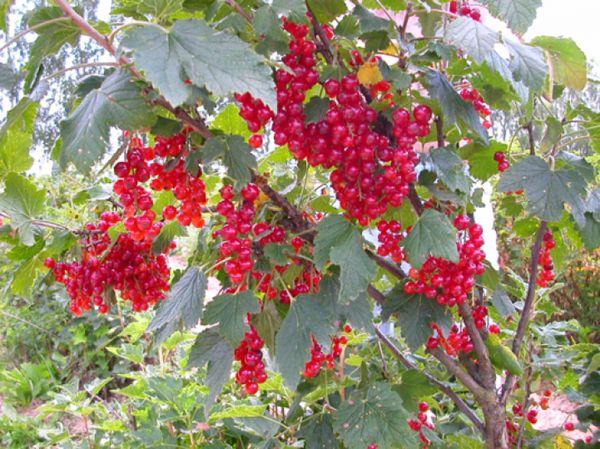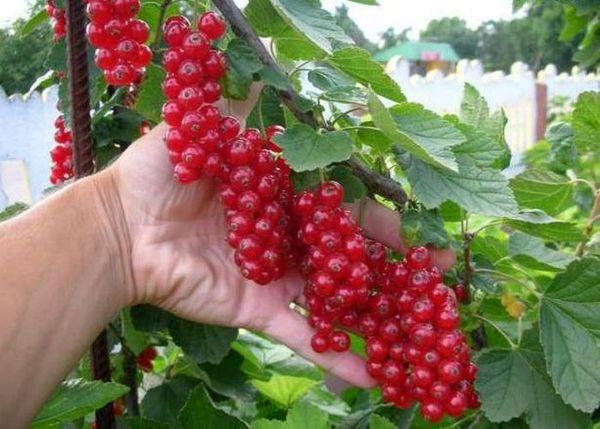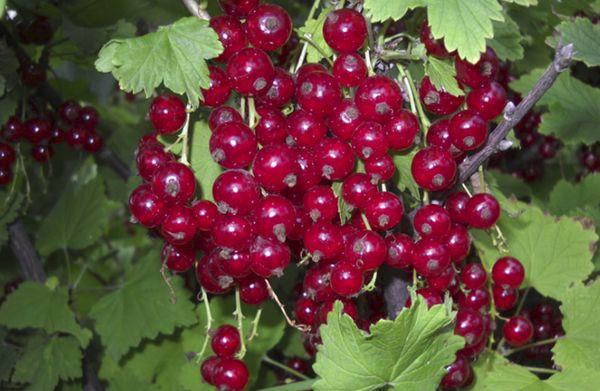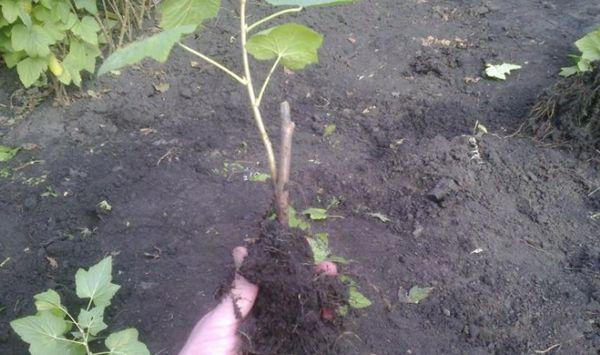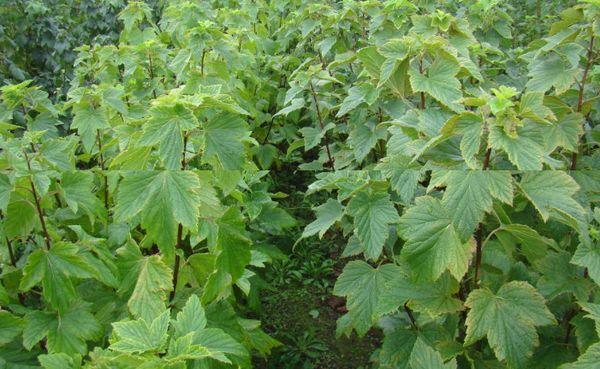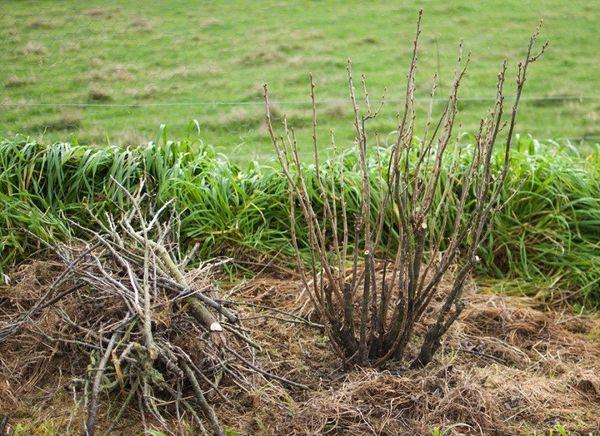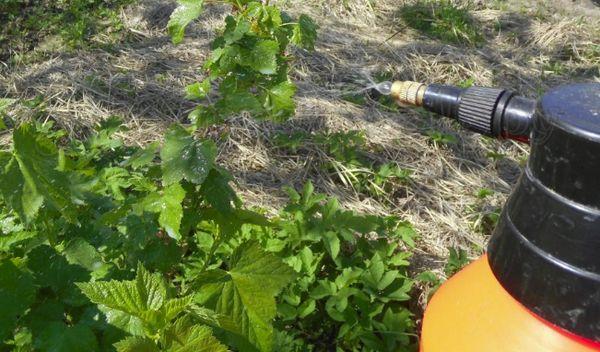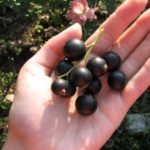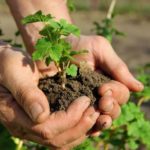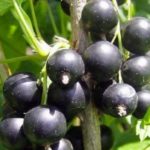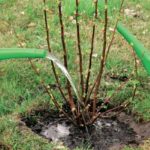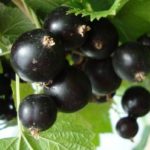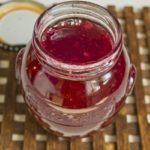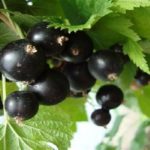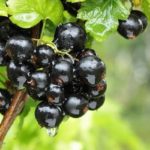Red currant Beloved is a modern high-yielding variety that is resistant to diseases and pests, therefore it is very popular among gardeners. Thanks to the abundance of vitamins and microelements necessary for humans, which are contained in large quantities in this berry, it has gained its admirers in many regions of Russia and Belarus.
- History of crop selection and region of growth
- Description of the Beloved currant
- Bush and root system
- All about flowering and fruiting
- Harvest and storage
- Positive and negative characteristics of the variety
- Frost and drought resistance
- Resistance to diseases and pests
- Landing Features
- Optimal timing
- Selection and preparation of a site
- How to choose a healthy and strong seedling
- Landing technology
- Caring for a currant bush
- Watering plants
- Top dressing
- Pruning an adult bush
- Caring for garden beds: loosening and mulching
- Preventative treatments
- How to propagate currants
- Dividing the bush
- Cuttings
- By layering
- Reviews from gardeners about the variety
History of crop selection and region of growth
The Beloved variety was bred in the late 80s of the last century at the Belarusian Research Institute of Fruit Growing. Breeder A.G. Voluznev, by crossing three varieties - Wonderful, Dutch Red and Cherry, managed to obtain an excellent high-yielding new product. The abundance of red berries on a bright green background of foliage made the currant bushes so attractive that the variety was named Beloved and in 1991 was included in the Belarusian State Register of Varieties; in 2006, Beloved was allowed to be grown in Russia.
Description of the Beloved currant
A mid-ripening variety of red currant, it is distinguished by high yield (9-12 kilograms of berries from an adult bush), a high rating of taste, it is self-fertile - does not require cross-pollination.
Bush and root system
The Beloved bush is low, compact, not too spreading, young shoots are reddish in color, becoming gray as the plant matures. The leaves are large, five-lobed, without shine, rich green.
The root system is more branched and powerful than that of black currant. Red currants can bear fruit in a garden plot for more than 20 years; the first harvest (about 3 kilograms per bush) is produced 3 years after planting.
All about flowering and fruiting
Currants bloom with inconspicuous, small, yellow-green flowers that resemble a bell. Flowering occurs in the first ten days of May and continues until the end of the month.
The berries ripen depending on the weather in the region, in late June-early July. Ripening is good, the berry is large, red, with dark stripes. The high sugar content, aroma and juiciness provided Beloved with a high tasting score - 4.8 out of 5 possible points.
The berries are consumed fresh and are suitable for making jam and preserves. The juice has a pleasant taste and is used in folk medicine as a diaphoretic and to saturate a weakened body with vitamins.
Harvest and storage
Red currants are harvested in dry, cloudy weather; the fruits are removed with brushes - this way there is less chance of crushing the berries.
Red currants are churned with sugar, made into jam, stored frozen or slightly dried in the oven at +50 °C until completely dry.
Positive and negative characteristics of the variety
The Beloved variety has many advantages that have ensured its high popularity:
- excellent productivity;
- resistance to low temperatures;
- self-fertility;
- high bush immunity;
- decorative plantings;
- resistance to fungal diseases.
Currants have few disadvantages, and they are more than offset by their advantages:
- may suffer from return frosts;
- does not tolerate shadows;
- suffers from heat and drought.
Planting berries provide the highest yields for 8-15 years, then the yield gradually decreases.
Frost and drought resistance
The beloved is frost-resistant, it tolerates cold temperatures down to -25 ° C. If the winters are not too severe, it does not require shelter.
Young plants do not tolerate drought well, but Beloved will withstand several days of intense heat with additional watering.
Resistance to diseases and pests
The beloved is highly resistant to fungal diseases and can suffer from septoria (leaf spot), goblet rust, and terry disease (reversion). Among the insects that are dangerous to it are: moth, glass beetle, but the plant is resistant to bud mite.
Landing Features
Planting any plants has its own characteristics that must be taken into account. Red currants should not be placed under fruit trees; they do not tolerate shade or waterlogged soil.
Optimal timing
It is best to plant red currants in the fall, in early September. Before the cold weather, the bush will have time to take root; in the spring it will be a strong seedling with strong immunity. If the seedling was purchased in the spring and already has green leaves, it can also be planted, but the plant will require a little more care. You should not pick off the leaves of the seedling; only remove the buds.
Before planting, the plant is immersed with its roots in water with the addition of Zircon or Epin. The plant will be saturated with moisture and beneficial substances contained in the root formation stimulator. After planting, such a weak seedling needs moisture and light shade until it gets stronger.
Seedlings purchased in pots in the summer are replanted immediately, they are watered in advance and carefully removed from the container along with the earthen lump. Autumn planting is optimal for red currants; the main thing is to plant the bush in time.
Important: if it is placed in open ground in October-November, the seedling will not have time to take root and grow stronger, so it will certainly die with the onset of cold weather.
The main advantage of such planting is that the seedlings on sale are fresh, they have not been stored for several months in unknown conditions, they are strong and strong.
Selection and preparation of a site
The beloved one needs a sunny area with good soil drainage; you can choose a hillock or a well-lit slope. The selected area is cleared of weeds and dug deep.
Red currants should not be planted next to black ones - both will suffer from such proximity. Do not place it next to other berry bushes: raspberries, cherries. The combination of currants with onions and garlic would be optimal. Vegetables will provide her with additional protection from pests and diseases.
How to choose a healthy and strong seedling
It is best to purchase planting material from specialized nurseries. There you can read the documents; sellers are responsible for their products. They buy two-year-old and one-year-old seedlings; two-year-olds are stronger and more expensive.
Before purchasing, carefully examine the roots of the plant. They should be well developed, without signs of rot. Skeletal roots (at least 3 of them) are elastic, moistened, with traces of clay mash. The branches are strong and elastic.
Landing technology
Red currants love space; when preparing holes for seedlings, the distance between them is 1.5 meters. If you plan to plant several rows, provide a 2-meter distance between them.
Tip: pits should be prepared 10-14 days before planting so that the soil has time to settle.
The finished pit should be 50 centimeters in diameter and depth. It is filled by a third with organic matter mixed with soil, compost, and mullein, which is poured into a heap. Complex mineral fertilizer is added. The seedling is placed in the hole at an angle. This ensures the development of the root system and shoots. The roots are carefully straightened, the hole is filled with soil and compacted. The planting needs to be watered at the rate of 4-5 liters per bush.The soil under the bush is mulched.
Caring for a currant bush
Red currants are unpretentious, but the plant requires minimal care and attention.
Watering plants
The beloved cannot tolerate drought. You need to water the plant once a week, but you need to focus on local weather conditions. Each bush requires 3-5 liters of settled, not cold water.
Top dressing
An adult plant is fed for the first time in early spring, before the buds open; granules of mineral fertilizer are simply mixed with the soil. Azofoska is a complex containing nitrogen, potassium and phosphorus necessary for plants.
The second time the plant is fed with mineral fertilizers after flowering. During the season, once every 14 days, the soil is additionally fertilized with organic matter, adding a little mullein or humus under the bush. After this, the soil is carefully loosened so as not to touch the currant roots, which are close to the surface.
Pruning an adult bush
Sanitary pruning is carried out in the spring. Remove dry, rotten, broken branches. Shaping and rejuvenating pruning can be done either in spring or autumn. In warmer regions, fine autumn days are reserved for it. Remove old branches and shoots that thicken the bush. All pruning tools must be clean and disinfected to prevent plant contamination.
Caring for garden beds: loosening and mulching
Loosening saturates the soil with oxygen, which is why plants need it. The soil under the currant bushes is weeded, lightly loosened, carefully so as not to damage the roots, and after watering, lightly mulched to keep the soil moist and prevent the soil from becoming waterlogged.
Preventative treatments
To prevent plant diseases and the proliferation of pests, the soil under the bush in the spring is cleared of fallen leaves and remnants of branches. To protect against pests and diseases in the spring, before the buds open, the bushes are doused with boiling water using a watering can. You can add a little copper sulfate or potassium permanganate to it - this will help stop outbreaks of disease and pests in the soil. The water temperature should not be higher than 70 °C.
If the plants are attacked by insects, the planting is treated with Karbofos or its analogues, in strict accordance with the manufacturer's instructions.
How to propagate currants
Plantings are propagated by dividing the bush, cuttings or layering.
Dividing the bush
This method is suitable if the bush needs to be moved to another place. In this case, it should be dug up and divided into several parts, leaving young shoots and healthy roots on each. The bush is divided into 2-3 parts.
Cuttings
Small cuttings, 15-20 centimeters high, are cut from healthy, strong and mature branches and placed at an angle in open ground. The cutting must have 4 buds. The cuttings are watered, weeded and by autumn a grown plant is obtained for planting in a permanent place.
By layering
The young branch is pressed to the ground, secured with wire or staples, preventing it from straightening, and sprinkled with soil. By autumn, several independent plants with roots and shoots will develop from the buds on the branch. They are separated with a knife or shovel and seated.
Reviews from gardeners about the variety
Olga, 43 years old:
“I have two Beloved bushes in the garden. If not for sale, then no more is needed. The variety is productive and very beautiful. The red tassels glow in the sun. And it is stored well, I put it unwashed with cuttings in small containers and put it in the freezer. In winter, both compote and fruit juice are wonderful.”
Ivan Nikolaevich, 56 years old:
“I love red currants more than gooseberries. The whole family drinks juice if we are sick. I chose my beloved because there is a lot of it, large and sweet. I heard that red currants are added to cucumbers instead of vinegar. Is she suitable for such a task or should she be more sour? Eating it is a pleasure, but what about the marinade?”

